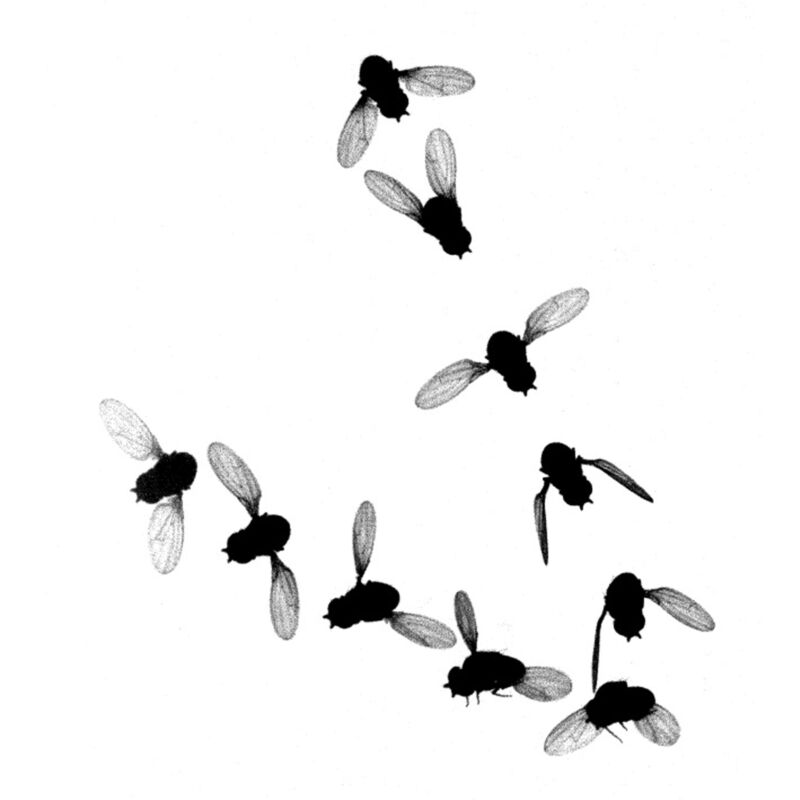
Florian Muijres, Dickinson Lab
About 350 million years ago, our planet witnessed the evolution of the first flying creatures. They are still around, and some of them continue to annoy us with their buzzing. While scientists have classified these creatures as pterygotes, the rest of the world simply calls them winged insects.
There are many aspects of insect biology, especially their flight, that remain a mystery for scientists. One is simply how they move their wings. The insect wing hinge is a specialized joint that connects an insect’s wings with its body. It’s composed of five interconnected plate-like structures called sclerites. When these plates are shifted by the underlying muscles, it makes the insect wings flap.
Until now, it has been tricky for scientists to understand the biomechanics that govern the motion of the sclerites even using advanced imaging technologies. “The sclerites within the wing hinge are so small and move so rapidly that their mechanical operation during flight has not been accurately captured despite efforts using stroboscopic photography, high-speed videography, and X-ray tomography,” Michael Dickinson, Zarem professor of biology and bioengineering at the California Institute of Technology (Caltech), told Ars Technica.
As a result, scientists are unable to visualize exactly what’s going on at the micro-scale within the wing hinge as they fly, preventing them from studying insect flight in detail. However, a new study by Dickinson and his team finally revealed the working of sclerites and the insect wing hinge. They captured the wing motion of fruit flies (Drosophila melanogaster) analyzing 72,000 recorded wing beats using a neural network to decode the role individual sclerites played in shaping insect wing motion.
Understanding the insect wing hinge
The biomechanics that govern insect flight are quite different from those of birds and bats. This is because wings in insects didn’t evolve from limbs. “In the case of birds, bats, and pterosaurs we know exactly where the wings came from evolutionarily because all these animals fly with their forelimbs. They’re basically using their arms to fly. In insects, it’s a completely different story. They evolved from six-legged organisms and they kept all six legs. However, they added flapping appendages to the dorsal side of their body, and it is a mystery as to where those wings came from,” Dickinson explained.
Some researchers suggest that insect wings came from gill-like appendages present in ancient aquatic arthropods. Others argue that wings originated from “lobes,” special outgrowths found on the legs of ancient crustaceans, which were ancestors of insects. This debate is still ongoing, so its evolution can’t tell us much about how the hinge and the sclerites operate.
Understanding the hinge mechanics is crucial because this is what makes insects efficient flying creatures. It enables them to fly at impressive speeds relative to their body sizes (some insects can fly at 33 mph) and to demonstrate great maneuverability and stability while in flight.
“The insect wing hinge is arguably among the most sophisticated and evolutionarily important skeletal structures in the natural world,” according to the study authors.
However, imaging the activity of four of the five sclerites that form the hinge has been impossible due to their size and the speeds at which they move. Dickinson and his team employed a multidisciplinary approach to overcome this challenge. They designed an apparatus equipped with three high-speed cameras that recorded the activity of tethered fruit flies at 15,000 frames per second using infrared light.
They also used a calcium-sensitive protein to track changes in the activity of the steering muscles of the insects as they flew (calcium helps trigger muscle contractions). “We recorded a total of 485 flight sequences from 82 flies. After excluding a subset of wingbeats from sequences when the fly either stopped flying or flew at an abnormally low wingbeat frequency, we obtained a final dataset of 72,219 wingbeats,” the researchers note.
Next, they trained a machine-learning-based convolutional neural network (CNN) using 85 percent of the dataset. “We used the CNN model to investigate the transformation between muscle activity and wing motion by performing a set of virtual manipulations, exploiting the network to execute experiments that would be difficult to perform on actual flies,” they explained.
In addition to the neural network, they also developed an encoder-decoder neural network (an architecture used in machine learning) and fed it data related to steering muscle activity. While the CNN model could predict wing motion, the encoder/decoder could predict the action of individual sclerite muscles during the movement of the wings. Now, it was time to check whether the data they predicted was accurate.
